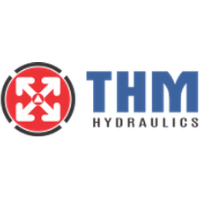Smarter Hydraulic Solutions: The Rise Of Intelligent Components In Modern Machinery
The world of industrial hydraulics is undergoing a massive transformation. With automation on the rise and energy efficiency becoming a global priority, today’s systems demand more than raw power—they require intelligence, precision, and control. Whether you’re in manufacturing, construction, agriculture, or energy, the right components can significantly elevate your system’s performance. From servo motor hydraulic pumps to load sensing proportioning valve adjustments, every detail counts when building smarter, more efficient machinery.

One of the most game-changing advancements in hydraulic technology is the integration of servo motors with hydraulic pumps. These servo motor hydraulic pumps provide a level of efficiency and responsiveness traditional systems simply can’t match. By allowing variable-speed operation, they reduce energy waste, optimize flow rates, and maintain precise control even under changing loads. Unlike conventional fixed-speed pumps that run continuously, servo-driven pumps operate only when needed—saving up to 70% of energy in some systems. They’re especially beneficial in applications like injection molding, CNC machinery, and press automation, where real-time performance and low heat generation are crucial.
Another underrated but essential component in advanced hydraulic design is the rotary actuator. Unlike linear actuators, rotary actuators convert fluid power into rotational motion, making them perfect for applications that require angular positioning or turning force in tight spaces. They are commonly found in packaging machines, robotic arms, and automated clamping systems. The beauty of a rotary actuator lies in its compact design and ability to deliver high torque with precise motion control, making it a go-to solution for engineers who need space-saving power.
As systems become more complex and automated, monitoring and control become just as important as movement itself. That’s where the linear position sensor for hydraulic cylinders comes into play. These sensors offer real-time data on cylinder stroke, which is critical in industries like agriculture, heavy equipment, and manufacturing automation. They enable closed-loop control, allowing machines to respond dynamically to environmental changes or operational demands. With accurate position feedback, operations become smoother, safer, and more productive.
Of course, no hydraulic system is complete without a proper flow management setup, and this is where load sensing proportioning valve adjustment makes a big difference. Load sensing valves regulate flow based on system demand, ensuring that energy is delivered where it’s needed most—no more, no less. Proper adjustment of these valves is essential to maintain efficiency and reduce component wear. If not calibrated correctly, the system may overwork certain sections while starving others, leading to inefficiencies, overheating, and even system failure over time. With correct proportioning, your system stays cool, responsive, and economical.
Many engineers and procurement teams looking to optimize their systems are actively searching for hydraulic motors for sale that match the quality and flexibility modern applications require. When exploring the market, it's crucial to choose suppliers that offer not just parts, but also technical support, compatibility assurance, and performance data. This is especially important for components like electric hydraulic valves and small hydraulic motors, where precision and reliability can make or break the system.
The integration of all these components—smart pumps, actuators, sensors, and valves—allows businesses to achieve a new level of operational intelligence. It’s no longer about brute force. Today’s hydraulic systems need to be agile, adaptable, and efficient. Engineers and system designers are shifting from conventional setups to intelligent configurations that respond in real time, reduce waste, and extend component life.
Conclusion:
To stay ahead in competitive markets, industrial businesses must rethink with THM Huade hydraulic strategy. That means investing in advanced technologies that offer long-term returns—not just in energy savings but also in reduced maintenance and increased uptime. Whether you’re retrofitting an old system or building new machinery from the ground up, using smarter components is no longer optional—it’s essential.
If you’re planning to upgrade your hydraulic systems or simply exploring better-performing components for upcoming projects, now’s the time to invest in solutions that deliver real value. Get in touch today for tailored guidance on integrating servo pumps, rotary actuators, and position sensing into your workflow.
